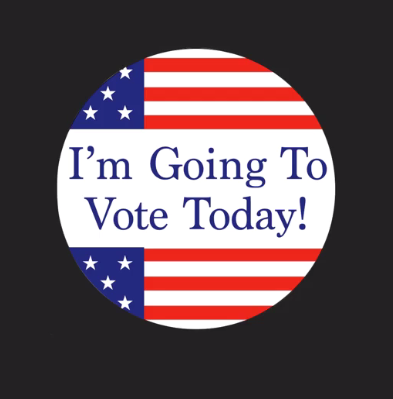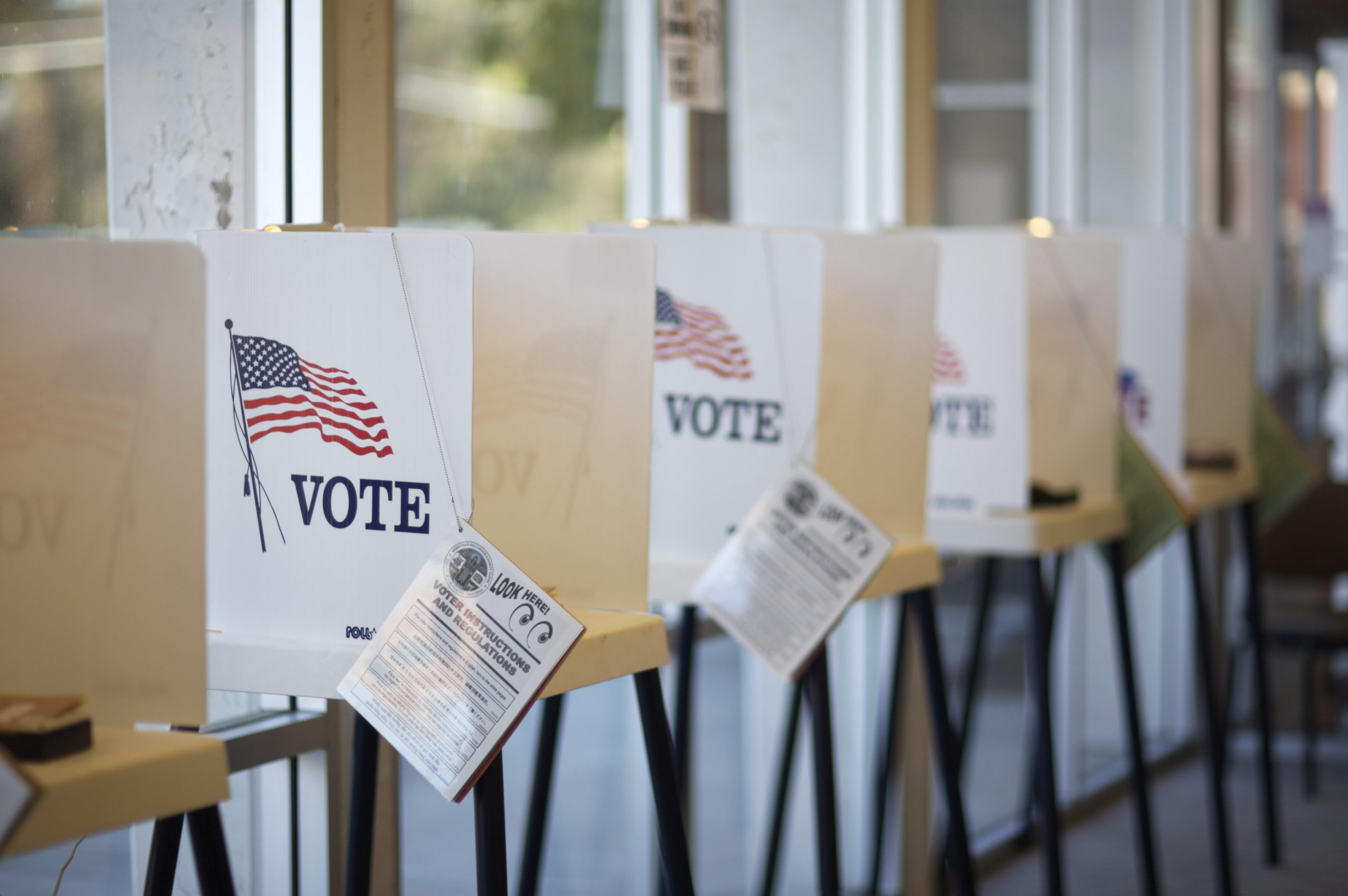Aaron Sackett, associate professor of marketing, was recently named as a finalist in the Knight Cities Challenge for his project, titled “I’m Going to Vote Today!” which aims to increase voter turnout using a “behavioral intervention.” If funded, his proposal would be tested in the November 2016 general election, using the entire city of St. Paul.
Sackett and research partner Christopher Bryan, a faculty member at The University of Chicago Booth School of Business, proposed a field experiment in which registered voters in St. Paul receive a sticker in the mail along with a message explaining what it is and why they’re being asked to wear it on Election Day. The large scale of the project would allow for the testing of several variants on the sticker and messaging (some voters would have no contact at all), with the primary sticker stating, “I’m Going to Vote Today!”
We asked Sackett to explain how his proposed experiment would work and what it could mean for voter turnout.
 How might a sticker influence a person’s thoughts and actions on Election Day?
How might a sticker influence a person’s thoughts and actions on Election Day?
First, sending out this sticker should serve as a reminder for people to make a plan for how and when to vote. Of course, any old message could do that, but the novelty of the sticker should get people to pay attention.
Second, the sticker and accompanying message serve as an indicator that voting is a socially desirable action, and that by wearing the sticker they can show both themselves and others that they engage in this desirable action.
Third, there’s a lot of research on labeling - that giving people labels increases the likelihood of them engaging in behavior consistent with those labels. The effect is even more powerful when we label ourselves. Wearing a sticker proclaiming your intent to vote is quite literally labeling yourself as someone who votes, or who is an engaged citizen more generally.
Finally, the people who are most likely to be influenced by our sticker are people who generally have a positive attitude toward voting but who don’t always follow through and vote. In many cases, the interest or even intention to vote is there, but when it comes time to actually travel to the polling site and vote, their motivation wanes. In such cases, our sticker functions as a barrier to copping out. It’s much harder to skip the polls if you’ve spent the whole day wearing a sticker stating that you’ll vote.
How would you go about conducting the experiment?

Aaron Sackett
We have access to the names and addresses of every registered voter in St. Paul. From this list, we will basically use random assignment to conditions. Because this is a field study and we can’t control many of the other factors that might influence someone’s voting behavior, we need to also collect a large sample to maximize the likelihood that random assignment does its job and that these uncontrolled factors don’t vary systematically with our conditions.
Our estimates suggest that each group will have to be on the order of several thousand individuals or households in size. If we are funded to involve the entire city with this project, it would have the benefit of opening up opportunities to test multiple hypotheses and to include several different variants on the sticker and/or the accompanying message to help identify which are the most effective.
Why is behavioral intention is so important when it comes to voting?
For a deliberate act like voting, behavior doesn’t occur without prior intention. Nobody accidentally votes, and I suspect cases of “impulse voting” are extremely rare, to the extent that it’s almost comical to imagine. So, in order to get people to vote, you need to create that intention first.
The problem is that behavioral intention is necessary but not sufficient in order for the behavior to occur. Lots of things get in the way. We forget, we get busy, tired, exhausted or otherwise de-motivated. What we aim to do with this project is provide evidence for one small, relatively inexpensive and innocuous way to help people create and stick to their intentions to vote.
If you conduct this experiment, what do you think success would look like?
I would consider any statistically significant positive effect of the sticker intervention to be a success, partly because this is a “proof of concept” project. If we can show that this procedure can increase turnout at all, I’m optimistic that we can fine-tune its effects to become more powerful in the future. Plus, when you’re operating on the scale of entire cities, even small effects are meaningful. Imagine if the sticker boosted turnout by only 1%, from say, 64% to 65%. In the city of St. Paul, that’s 1,500 to 2,000 people who otherwise wouldn’t have gone to the polls.
We’ve seen elections decided by less than that amount in recent years, but what’s even more important to me is that each of these individuals has taken one more step toward increasing their level of civic engagement. If we can build momentum from there while also finding other ways to increase engagement in our democratic process, the longer-term, cumulative effect could be quite large.
Want to learn more? Watch this short video Sackett made for a Knight Foundation event that describes how "I'm Going to Vote Today!" would increase civic engagement.
Learn more about how to vote in Minnesota's caucuses. Student Affairs has information for students interested in participating.







